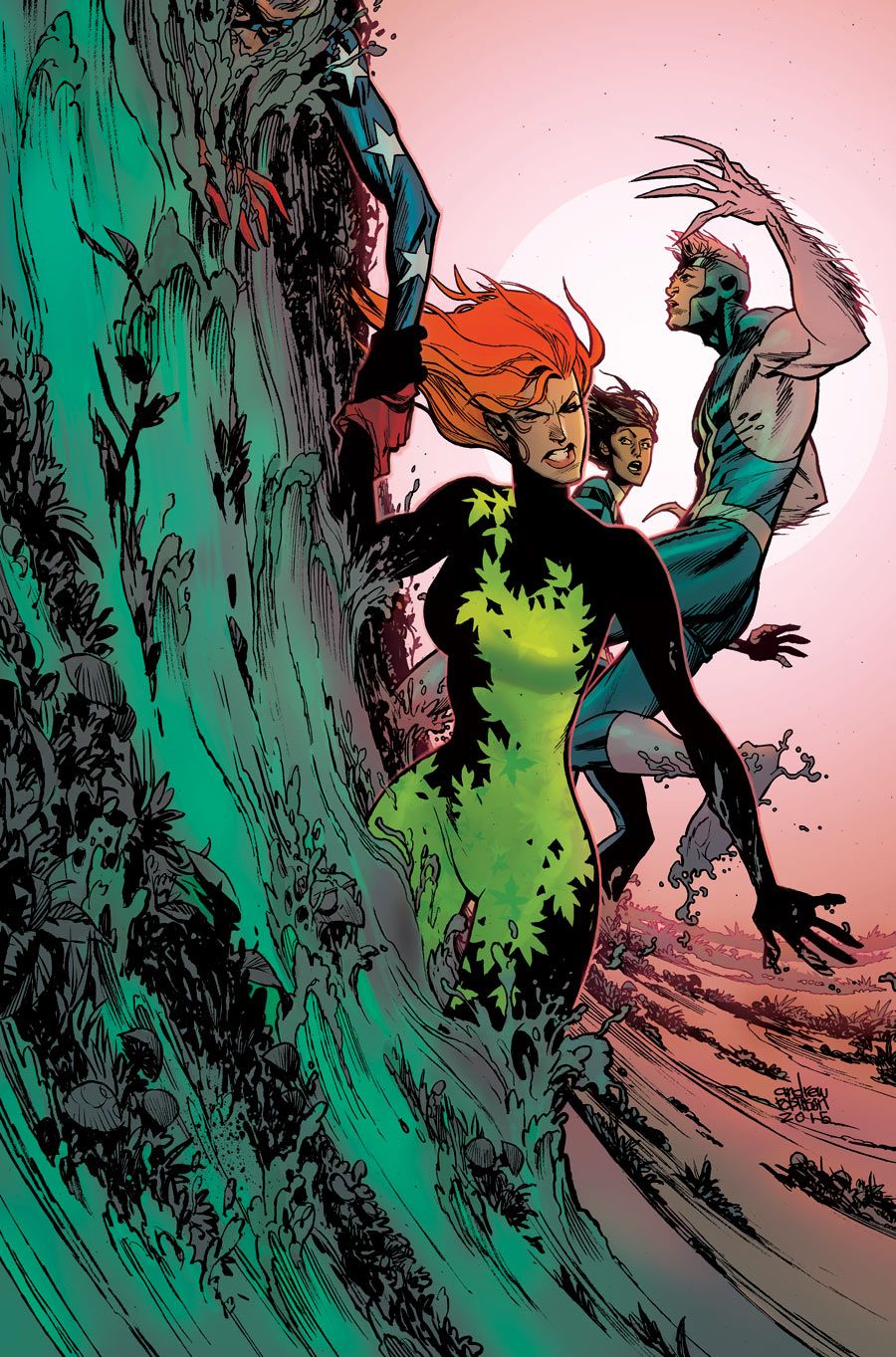Jeff Parker, Travel Foreman and Jeromy Cox had a tough assignment in taking over "Justice League United." As the somewhat forgotten Justice League title, the book lacked a strong purpose in its run, an almost random title that meandered along. With a new central idea and a smaller core cast, "Justice League United" #11 kicks off the new creative team's run, and so far there's a lot of strong potential here.
"Justice League United" has had a slightly strange and winding road to get to this point. Originally titled "Justice League of America" and featuring a rival team to "Justice League," the book transformed into "Justice League United" after the "Forever Evil" event and introduced several new characters to the mix. Parker hasn't thrown any of that out, but he has taken the several month gap since the publication of "Justice League United" #10 to let the book find a new purpose.
Parker wastes no time on that front, placing Alanna Strange, Equinox, Stargirl and Animal Man in the center of the book, with Adam Strange in an important but less active role. The book itself seems to be akin to some older DC Comics titles without actually lifting from them. Like "Primal Force," the characters are now fighting off powerful manifestations that can appear anywhere and everywhere across the globe; like the early issues of "Justice League Task Force," the core characters are recruiting new temporary members best suited for each new mission.
Parker uses the first issue of this new format to let us see the different temporary members (Mera, Swamp Thing, Poison Ivy and Jason Blood/Etrigan) get recruited one at a time; while it takes up a little space here, it's almost important to get the feel for how the series now works, and the sorts of offers and lures necessary to bring in a mixture of heroes and villains in order to fight a greater evil. It works fairly well; Parker doesn't dwell upon any one of them for too long, and he manages to even have the Swamp Thing to Poison Ivy transition flow rather nicely from one to the other.
The concept of the Breakers, the big new threat, feels like it's too early to truly get a strong feeling for just yet. We've only seen one manifestation and, while it doesn't appear until near the end of the issue, it certainly comes across as dangerous. The big question will be if Parker and Foreman can keep the threats varied from one story to the next; if they do, it's a nice catch-all to provide multiple foes that are all linked as part of a larger, dangerous menace.
The one part of the series that doesn't work so well is Adam Strange. While his role will no doubt ruffle some feathers, I think it's actually a smart choice; it gives the other members of "Justice League United" a tangible reason above and beyond saving the world to fight the Breakers. (And while we're given enough allusions to what transformed Adam Strange in-between "Justice League United" #10 and 11, it's a story that will no doubt be told in full before too long, perhaps in an Annual.) Instead, the issue I have is Adam's narration of the issue. It comes across a little too stilted, trying a little too hard to add gravity to a situation that doesn't need it. Hopefully over time this will get smoothed out; for the moment, it's jarring every time it appears.
Foreman's art is strong in some places and slightly odd-looking in others. His Swamp Thing is eye-catching, truly looking like a being composed of vines and other plants all tightly knit together. The ordinary can look noteworthy too here, with Jason Blood's widows peak hair and slightly grubby face bringing a level of reality to the book that still is distinctive. Jeromy Cox's colors also play a strong role here; the icy blue of Zeta Space makes it feel sufficiently unearthly, an entire setting based entirely on that single color. It's also a good contrast with the bright red of the Breakers, almost glowing right off of the page.
By way of comparison, look at the first panel on page 4, specifically at Mera. The way Foreman draws her comes across as awkward and off-putting. Her body is in a strange crouching position, which comes across as multiple points on her body -- head, breasts, hips and knees -- all looking protruding and unnatural. With her hair completely pulled back in the water and a bestial expression on her face, she's less a person and more like a frilled dragon hissing at someone that's disturbed it. It's this disconnect that keeps "Justice League United" #11 from having a united (no pun intended) look about it. Some moments are great, then other ones have you scratching your head in confusion.
"Justice League United" #11 is overall a good start to the new incarnation of the series; we get a good introduction to the basic ideas and thrust of "Justice League United" that holds back on pouring on the revelations right out of the gate. If the rough spots can be smoothed out, this book can easily jump all the way up into the realm of excellent. For now, though, it's certainly good enough to pick up next month's conclusion to this opening two-part story. Parker and Foreman's new "Justice League United" has its long-awaited purpose, and it's one just full of possibilities.

